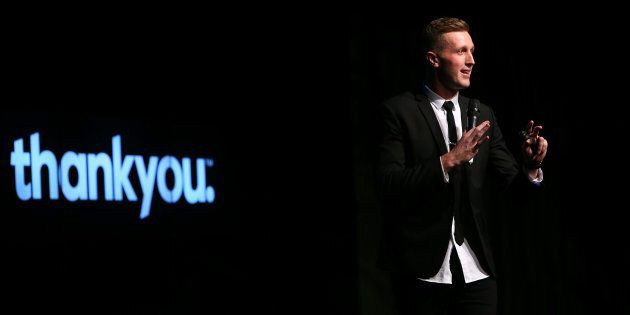This guide will address the following Commerce Years 7–10 syllabus dot-points of Option 4: Running a Business
- Discuss the characteristics of an entrepreneur, including (ACHEK019):
- Seeing and taking advantage of an opportunity; establishing a shared vision; demonstrating initiative, innovation and resilience; appreciating the role of failure in success (ACHEK019, ACHEK020).
Content (Theory)
We thought the best way to contextualise these dot-points was to dive into a case study. Who better to speak about than our very own, Australian Entrepreneur — Daniel Flynn.
Seeing and taking advantage of an opportunity
In 2008, Australian entrepreneur Daniel Flynn recognised two sets of alarming statistics:
- Millions of children were dying due to waterborne illnesses
- In 2008, the world market for bottled water was approximately $50 billion
In these contradictory sets of facts, he saw a problem and an opportunity. Taking advantage of the opportunity led him to his solution — Thankyou Water — an Australian social enterprise that donates funds to safe water, hygiene and sanitation programs, and food security programs from the sales of its bottled water, body care and food products.
Establishing a shared vision
As a first-year university student, Flynn together with his friend Jarryd Burns and his then-girlfriend now-wife Justine Flynn pitched their vision to, “the largest distributor of beverages in the country”.
In the meeting, Flynn shared the company’s vision — Change the world, one bottle at a time.
On the spot, the director said, “I love it. I’m going to order 50,000 units from you guys. How quick can you get it to me?”
Flynn, shocked and unprepared for the question, replied, “Give us about three weeks.”
Demonstrating Initiative
As first-year university students, the trio had little to no understanding of manufacturing lead times. Without demonstrating initiative, Flynn would have severely tarnished his reputation, likely lost the order from the director and set himself and his team up for failure. Flynn’s seemingly unorthodox approach to progress is a method of madness common amongst a large number of young, budding entrepreneurs.
What Flynn and his team decided to do following the deal demonstrated initiative and maturity beyond their years.
Innovation and Resilience
Flynn directly associates his early success to innovative “social media marketing” and the “authentic connection with consumers”.
In a relentless battle to get international convenience chain 7-Eleven to stock Thankyou Water, Flynn and his team produced a video on YouTube asking for their fans to visit the 7-Eleven Australia Facebook page to promise to buy Thankyou water if it would stock it.
Their innovative and resilient approach worked. In a matter of two weeks, fans of the community were singing, dancing and rapping. The team even attracted significant media coverage.
The end result? 7-Eleven said yes! Thankyou Water swiftly became the third best-selling brand at the chain and even made its way up to the top spot for a duration of time.
Appreciating the role of failure in success
Despite the early success, 7-Eleven’s yes didn’t translate into a yes from Australia’s two primary grocery chains, Coles and Woolworths.
A significant setback for most (a failure to some), not for Flynn and his team. He repeated his social media magic once more. This time flying helicopters outside Coles and Woolworths HQ with huge signs saying, ‘Dear Coles, Dear Woolworths, thank you for changing the world [If you say yes].”
After a five and three hour meeting at Coles and Woolworths respectively, they both said yes.
To them, failure wasn’t their sign to stop. It was their sign to take their efforts to the next level. To tackle the situation from another angle. To try once more.
Innovation. Passion. Resilience.
Content (Practical)
Activity (for students): Perform a case study on your favourite business. In your case study, make specific mention to the following:
- How did the founder(s) (person(s) who created the business) see the opportunity and how did they take advantage of it?
- How did the founder communicate their vision for a better world to their community?
- Describe when the founder and their team demonstrated initiative in tackling obstacles?
- How did the founder and their team display innovation and resilience?
- What failure did the founder and their team face? How did they overcome it? What did they learn from their moment of failure?
The above questions should form the major headings of your case study.



